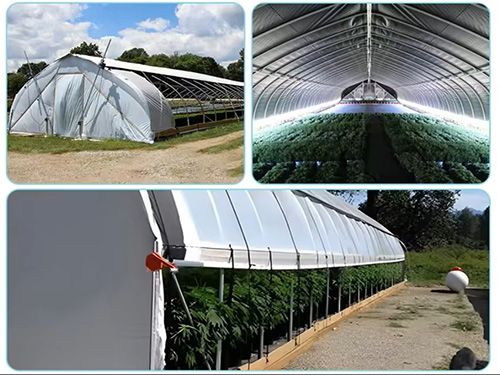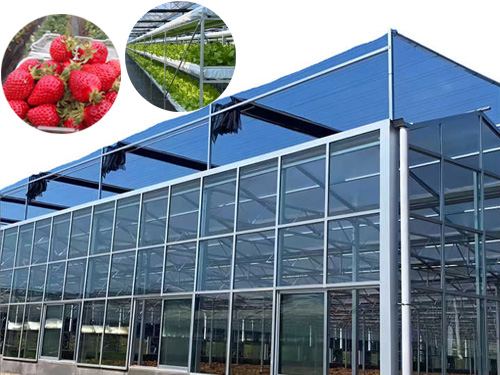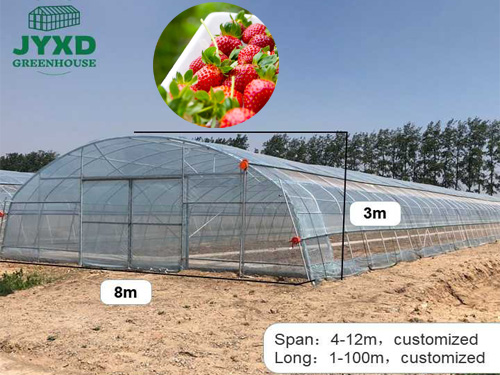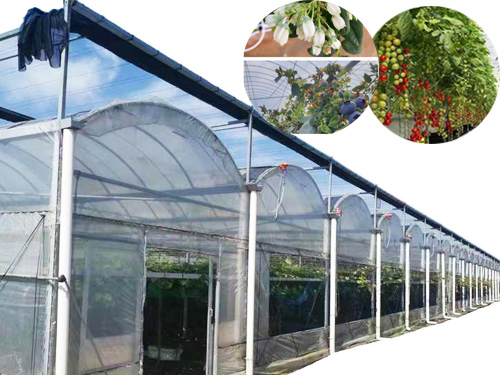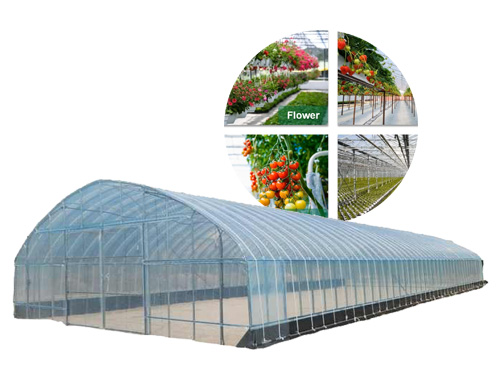NEWS DETAILS
NEWS INFORMATION
Why UV Film for Greenhouses is Essential for Protecting Your Crops: Boost Plant Growth and Prevent Harmful UV Radiation
AUTHOR:jyxd-greenhouse DATE:2025-02-01 08:57:16 HITS:61
In greenhouse farming, controlling environmental factors is crucial for ensuring healthy plant growth and maximizing crop yields. Among the many factors that affect plant health, ultraviolet (UV) radiation plays a significant role. While some UV exposure is essential for plant development, excessive UV radiation can damage crops and hinder their growth. This is where UV film for greenhouses comes into play. UV film acts as a protective layer that helps regulate the amount of UV radiation entering the greenhouse, offering multiple benefits for both plants and greenhouse operators. In this article, we will explore the importance of UV film for greenhouses, its role in plant growth, and how it prevents harmful UV radiation.
Understanding UV Radiation and Its Impact on Plants
UV radiation is part of the electromagnetic spectrum emitted by the sun. It is divided into three types based on wavelength: UVA, UVB, and UVC. While the Earth's atmosphere blocks most of the harmful UVC rays, UVA and UVB rays reach the surface and can have both positive and negative effects on plants.
· UVA Radiation: UVA rays have the longest wavelength and are the least harmful to plants. They contribute to plant processes like photosynthesis and can help stimulate certain growth processes.
· UVB Radiation: UVB rays, while essential for some plant functions, can be damaging in high doses. Overexposure to UVB rays can cause leaf burn, reduced photosynthesis, and slower plant growth.
· UVC Radiation: UVC radiation is extremely harmful to plants and organisms, but it is mostly absorbed by the ozone layer and does not pose a significant risk to greenhouse crops.
While UV radiation is essential for some plant processes, excessive exposure can cause stress, reduce growth rates, and even lead to plant death. UV film provides a protective barrier that limits harmful UV radiation while still allowing the beneficial light necessary for plant health.
The Role of UV Film in Protecting Greenhouse Crops
UV film is specially designed to filter and diffuse UV radiation entering a greenhouse. By blocking harmful UV rays and allowing beneficial light to pass through, UV films help to create an optimal environment for plants. Here are some key ways UV film contributes to crop protection:
1. Protects Plants from Harmful UV Radiation
One of the primary benefits of UV film is its ability to filter out harmful UV rays, particularly UVB and UVC, which can damage plant tissues. Prolonged exposure to these rays can cause the following issues:
· Leaf Burn and Sunburn: Excessive UV exposure can cause leaf tissues to burn, resulting in scorched or browned leaves. This damage can reduce the plant’s ability to photosynthesize and negatively impact overall growth.
· Reduced Photosynthesis: UV radiation, especially UVB, can inhibit the photosynthesis process by damaging chlorophyll in plant cells. This reduces the plant's energy production and slows growth.
· Stunted Growth and Yield Loss: Continuous exposure to harmful UV radiation can lead to stunted growth, smaller fruit, and reduced crop yields. UV film helps to prevent these negative effects by reducing the amount of harmful radiation entering the greenhouse.
By using UV film to block harmful UV rays, greenhouse operators can significantly reduce the risk of plant damage and ensure healthier, more robust crops.
2. Promotes Healthy Plant Growth
While excessive UV radiation can be harmful, a controlled amount of UV exposure is beneficial for plant growth. UV light plays a role in regulating plant development, strengthening cell walls, and stimulating the production of certain secondary metabolites that enhance plant resistance to pests and diseases.
UV film helps to strike the right balance by allowing a controlled amount of beneficial UVA and UVB radiation into the greenhouse. This controlled exposure promotes healthy plant growth by:
· Stimulating Photosynthesis: UVA and UVB light are crucial for photosynthesis, the process by which plants convert light into energy. UV film allows the necessary light to reach plants, helping them produce the energy they need for growth and fruiting.
· Enhancing Plant Resistance: Moderate UV exposure helps plants develop thicker cell walls and produce protective compounds, making them more resilient to diseases and pests.
· Boosting Flowering and Fruiting: Some plants require UV radiation to trigger flowering and fruiting processes. UV film helps regulate this exposure, ensuring that plants can flower and produce fruit without the harmful effects of excessive radiation.
By providing plants with the right amount of UV radiation, UV film contributes to stronger, healthier crops with higher yields.
3. Improves Greenhouse Climate Control
UV film also plays a role in regulating the overall climate inside the greenhouse. By filtering UV rays, it helps to maintain a more stable temperature and humidity level, which are critical for plant growth.
· Temperature Regulation: UV film reduces the amount of solar heat entering the greenhouse by blocking part of the UV radiation. This helps to keep temperatures within a more consistent and comfortable range for plants, reducing the risk of heat stress.
· Reduced Water Loss: By maintaining a more stable temperature, UV film can also help reduce excessive water evaporation from the soil and plants, promoting better water retention and more efficient irrigation systems.
With UV film in place, greenhouse operators can improve their control over the internal climate, leading to healthier plants and more efficient growing conditions.
Benefits of UV Film for Greenhouses
In addition to protecting plants from harmful UV radiation and promoting growth, UV film offers several other benefits that enhance greenhouse productivity and efficiency:
1. Energy Savings
UV film can help reduce the need for artificial heating or cooling systems by moderating the greenhouse temperature. This leads to energy savings by minimizing the need for mechanical climate control.
2. Durability and Longevity
UV film is designed to be highly durable and resistant to wear and tear. Many UV films are UV-resistant themselves, meaning they will not degrade or lose their effectiveness over time. This makes UV film a long-lasting investment for greenhouse operators.
3. Improved Pest and Disease Control
UV film can help to create a more favorable environment for beneficial insects and pollinators while deterring harmful pests. Some studies suggest that UV film may reduce the attraction of certain pests, helping to minimize infestations in the greenhouse.
4. Cost-Effective Solution
UV film is a cost-effective solution for greenhouse operators who want to protect their crops without investing in expensive climate control systems or complicated treatments. It provides an affordable, simple way to enhance plant health and maximize crop yield.
Conclusion
UV film for greenhouses is an essential tool for protecting crops from the harmful effects of excessive UV radiation while promoting healthy plant growth. By allowing controlled exposure to UV light, UV film helps to balance the needs of plants, stimulate photosynthesis, and enhance plant resistance to pests and diseases. Additionally, UV film contributes to better climate control, energy savings, and improved greenhouse efficiency. Greenhouse operators who invest in UV film can ensure their crops thrive in an optimal environment, leading to healthier plants, higher yields, and more successful growing seasons.
Hebei Juyou Xinda Greenhouse Facilities Co.,Ltd.
Copyright © 2024-2025 https://www.jyxd-greenhouse.com. All Rights Reserved Hebei Juyou Xinda Greenhouse Facilities Co.,Ltd.Copyright





 Current Location:
Current Location:


